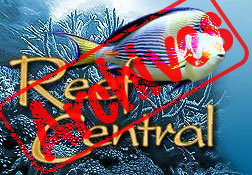

|
|
|
#1
|
|||
|
|||
|
Chaeto-Hawaii-Illegal?
does anyone know if it is illegal to have chaetomorpha macroalgae in hawaii?
or if it is illegal to ship it here? i need some for my tank |
|
#2
|
|||
|
|||
|
They have so many macros in your backyard that we do not have access to... If I were in hawaii, i'd pick some up from the ocean.
__________________
COMING SOON........INVASION OF THE MARINE PLANTED TANKS |
|
#3
|
|||
|
|||
|
Quote:
|
|
#4
|
|||
|
|||
|
ask some of the local fisherman there. i'm sure they know where to find some.
__________________
COMING SOON........INVASION OF THE MARINE PLANTED TANKS |
|
#5
|
|||
|
|||
|
Before you contemplate collecting anything, be sure to thoroughly read the Department of Land and Natural Resources website and check:
1) where the marine protected areas are that do not allow any collecting and; 2) the regulations for collecting Gracillaria (limu/ogo). You can not remove any holdfasts, only take portions of the plant and you can not remove live rock. http://www.hawaii.gov/dlnr/dar/fish_regs/marinverts.htm http://www.hawaii.gov/dlnr/dar/library/har_toc.htm For what you are allowed to import, you need to go to the State's Department of Agriculture: http://www.hawaiiag.org/hdoa/ As far as I know there are no regulations on importing marine algae, but why bother when you can get tons of it here already?? Aloha! JCD |
|
#6
|
|||
|
|||
|
Quote:
the ones i can get down here, can they be used for refugiums? can u say the name(s) of the macroalgaes I can use again please? |
|
#7
|
|||
|
|||
|
does the ogo remove nutrients from the tank?
in other words is it good for nutrient export? |
|
#8
|
|||
|
|||
|
Of course, Gracillaria works fine, you can also find Caulerpa, Chaetomorpha ... if you don't already you should get a good macroalgae ID book like Litller and Littler's Marine Algae.
Aloha! JCD |
|
#9
|
|||
|
|||
|
From my own experience Chaetomorpha species tend to be most common around high nutrient areas near bird nesting islands (rookeries) and along inland bays and such. That would be the first place I'd look, Ulva (sea lettuce) would also be very likely there as well.
You could theoretically use any algae for a refugium export species but Ulva, Chaetomorpha, Caulerpa and to a lesser extent (IME) Gracilaria, Enteromorpha, Halimeda, Hypnea, Halymenia and similar can also be used, but grow more slowly. >Sarah
__________________
"Seaweed is cool, seaweed is fun, it makes its food from the rays of the sun!" "Wild means everyone owns it, and no one owns it." ~3rd grader |
|
|